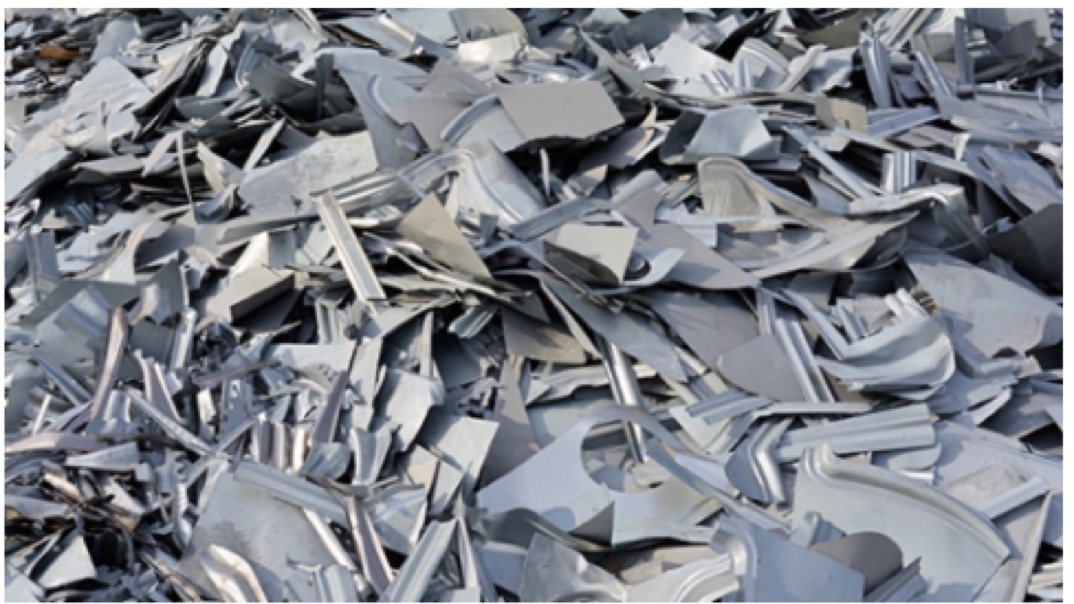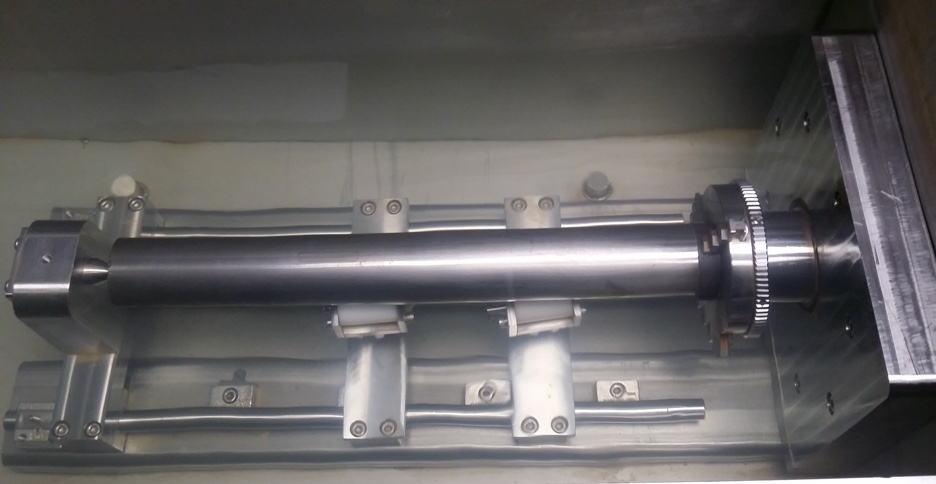Committed to Producing Clean Steels
Gerdau has made significant advancements in sustainable steel cleanliness through enhanced melt-practice developments and strict process controls.

What is Clean Steel?
Improvements in steel manufacturing processes and advancements in the science of steel evaluation have substantially improved steel quality, compared to just a couple of decades ago. These advancements have resulted from extreme chemistry and property control, as well as enhanced refinement techniques to raise the purity of steel. This high level of purity is what the industry refers to as clean steel. Simply put, clean steels are steels that contain limited non-metallic inclusions in terms of size, shape, composition, distribution and frequency. As a result, clean steels are capable of outperforming other materials and excel in applied high stress states, such as those used in transportation equipment and other applications.
Non-metallic inclusions are particles formed in the steelmaking process. Those particles are classified into two groups, exogenous and endogenous. Exogenous inclusions are formed from unintended chemical or mechanical interactions and re-oxidation of the liquid steel with its surroundings, such as slags, mold powder and refractories. They are larger than endogenous inclusions that are normally formed due to the reactions during the refining process. Endogenous inclusions are usually classified as sulfides, aluminas, silicates and other oxides. They can be of very small sizes, thereby making them more difficult to float out of the liquid steel.
Composition, size, amount and distribution of inclusions has a large effect on a part’s properties. The role of clean steel producers is to minimize inclusions and consequently reduce its detrimental effect on final products. Steel parts, particularly moving parts for applications within transportation equipment, are especially susceptible to the effects of non-metallic inclusions. These inclusions may contribute to reduced fatigue life on parts exposed to continuous rotation, such as wheel hubs, transmission gears and shafts, crankshafts and camshafts. Premature failures in these highly stressed components have driven this push for developing cleaner steels.
Many studies on the composition and shape of inclusions have been conducted to understand the relation between inclusion type, inclusion and steel interface, and crack initiation. For example, the bonding effect at the inclusion and steel interface has been of particular interest. Sulfides, aluminas and other oxides have different bonding behaviors and will have different effects in the steel. Research shows that inclusions with an easy de-bonding behavior, such as alumina, are the ones that will generate a quick initial micro-crack, consequently reducing fatigue life.

How Clean Steel is Made
Producing clean steel begins in the scrap yard. Scrap with limited amounts of certain elements, such as copper, tin, sulfur and phosphorous, will yield cleaner steels. The alloys used in clean steel production also need tight quality controls regarding the chemistry and residual elements.
Several key process parameters in melting, refining, degassing and casting are then appropriately controlled to produce the liquid steel with the right attributes. These include controlling the oxygen level in the steel (from tapping to final product), slag engineering, and chemistry control. It is also important that minimal slag carryover occurs when the liquid steel is transferred from the furnace to the ladle, where secondary refining begins.
Secondary refining is composed of two stages, ladle refinement and degassing. During ladle refinement, the chemistry, slag, and temperature of the steel are adjusted until the desired results are achieved. The steel is then sent to the vacuum degassing station where it is stirred under vacuum to remove undesired gases, such as hydrogen, nitrogen and oxygen. At this stage, it is important to monitor the pressure, flow rate, and time in order to achieve proper slag and steel interaction.
Once the vacuum degassing process is complete, the focus is to avoid re-oxidation and promote inclusions flotation at the caster before solidification. This “tertiary metallurgy” has become an important aspect in clean steel production. Recent developments in casting technology, such as computer fluid-dynamics (CFD) simulations and water modelling have been used to study flow behavior. The objective is to study the best tundish designs and flow modifiers in order to increase inclusion flotation and avoid steel re-oxidation, while decreasing turbulence.
Additionally, refractories used in tundish linings, shrouding devices and submerged entry nozzles have been improved by way of materials and design. Significant effort is put into preventing re-oxidation resulting from the contact of air and steel during casting. Clean steels are cast under protective atmosphere, using inert gases such as argon and sometimes nitrogen to protect the steel from contact with air. Tundish argon inertization technologies, mold and tundish powders, and new flux addition control devices are constantly evolving to achieve this protection.

How Clean Steel Is Measured
Non-destructive testing of the steel bars prior to its use, utilizing methods such as automatic ultrasonic inspection and magnetic flux leakage testing, is the first filter to understanding steel cleanliness and offering feedback for process improvement.
Even the cleanest steels produced today will have some small level of impurity, which is inherent to the process. Therefore, it is important to understand the cleanliness of the steel and its ability to satisfy the fit and function of the end product. Both size and location of inclusions can influence the final performance. The level of steel cleanliness that is acceptable to a certain product may not be acceptable to others.
For instance, bearings, gears and shafts each have unique production processes with their own particular product testing needs. Fatigue testing is a good example. In addition to traditional bending, torsion and push-pull fatigue testing, more specific tests, such as rolling contact fatigue testing for bearing products and tooth bending fatigue testing for gears, may be required.
Historically, indirect methods were used as a correlation to cleanliness, such as oxygen content in steel and nitrogen pickup. The concept is that the less exposure steel has to the atmosphere, the lower the oxygen and nitrogen pickup, thus the cleaner the steel. Today, this concept has evolved to include different types of characterizations and has created more discussion around this correlation.
Traditional measurements of steel cleanliness, such as ASTM E45, ISO 4967 and JIS G 0555, have been complemented by acid dissolution tests, spark-dat (OES-PDA) testing, automated scanning electron microscope (SEM) analysis, extreme value analysis (EVA) and immersion ultrasonic testing.
Recent investigation techniques are now considering inclusions as small as 1 micron. Additionally, the inclusion composition can be determined by automated SEM features, which plot the inclusions’ chemistries and sizes in customized ternary diagrams. This is being used today as a tool for process feedback and also research.
Another good example is the immersion ultrasonic testing. Frequencies from 10MHz to 100MHz are used to investigate the amount of inclusions in a certain volume of steel. This is a significant development considering these microscopic inclusions were previously determined with polished cross-sections and microscopes. Now a much larger volume with a true representation of the lot of steel can be reliably evaluated.

The Future of Clean Steel
The demand for clean steels will continue to increase due to the global push for energy efficiency and stricter CO2 emission regulations. OEMs (particularly automotive) will continue developing lightweight designs that have better fuel efficiency and higher performance expectations, thus leading to increased quality demands throughout the supply chain, including steel producers.
Future technologies to produce clean steel will include having more product testing visibility in real time. The emergence of high frequency immersion ultrasonic testing (UT) has created the ability to detect very small non-metallic inclusions that were not possible to detect in the past. Being able to control these small inclusions and combining different techniques may hold the key for real advancement.

